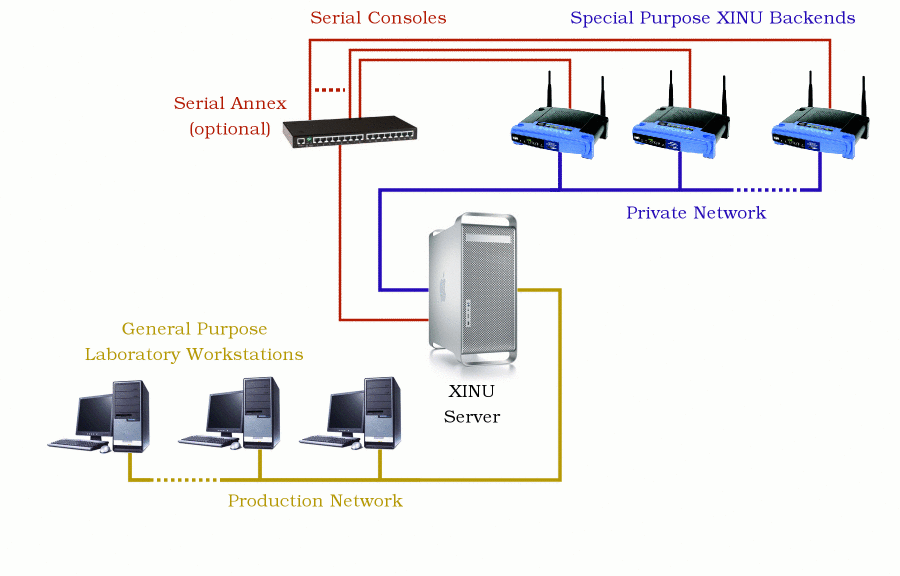Build Backend Pool
Contents
Summary
This page details how to scale your laboratory environment up to a pool of backend target machines available for remote access.
The Big Picture
XINU Backends
Backend targets upload a student's kernel over a private network on boot, and run the O/S directly. No simulations or emulation are involved; this is real hardware.
MIPS targets: We use Linksys WRT54GL wireless routers (~$60) with serial port modifications (~$10) running an embedded MIPS32 200MHz processor, 4 MB flash, 16 MB RAM, two UARTs, wired and wireless network interfaces.
PowerPC targets: We use Apple G3 desktops (recycled) with 512 MB RAM, linear framebuffer, PCI bus, NIC, HD. Apple G4 MiniMac also supported.
CISC targets: Classic XINU runs on Intel x86, Sun 3/Motorola 68K, Sparc, and VAX, among others.
XINU Server
A general purpose server with multiple network interfaces manages a private network for the XINU backends, using standard network protocols like DHCP and TFTP.
Backend serial consoles can connect directly to server's serial ports, or, in larger installations, to a serial annex or concentrator that allows many more serial ports.
A daemon running on the server allows users on frontend workstations to remotely access backend serial consoles, or upload fresh kernels. Optional rebooting hardware allows clients to remotely reset crashed backends.
Our Console Tools are freely available for modern UNIX platforms, including Fedora Linux and Solaris.
XINU Frontends
General purpose computer laboratory workstations can compile the XINU kernel, using the standard GNU C compiler and UNIX toolchain. GCC crosscompilers are readily available when the frontend architecture does not match backend architecture.
Backend consoles can be connected directly to frontend serial ports, or frontends can communicate with server daemon that manages collections of backend serial consoles.
With fully remote console access, kernel upload and powercycling, any machine on the network is a potential frontend, and need not be physically near the XINU server and laboratory hardware. Students can work on their operating system projects from their dorm room computers.
Additional (Optional) hardware
The Server
DHCP Daemon
TFTP Daemon
XINU Console Daemon
The Client
Cross-Compiler
Console Access
Security
A word on security
